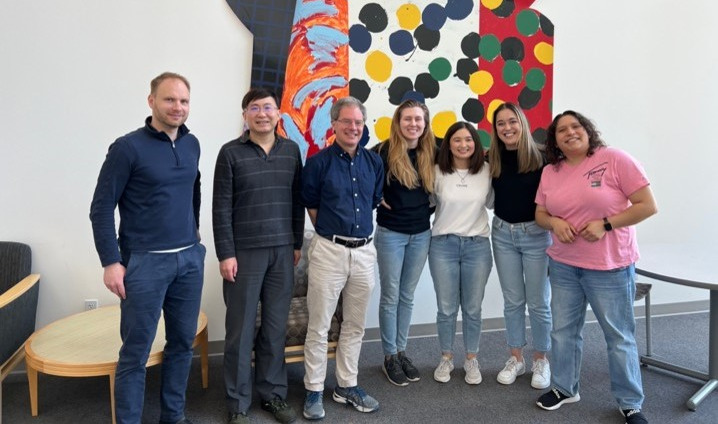
Case Study: Accelerating Iteration with Accessible Analyses with the UTSW Corey Lab
The Partner
Led by David Corey, Ph.D., the Corey Lab at UT Southwestern Medical Center is focused on nucleic acid therapeutics and RNA biology. By applying a variety of state-of-the-art techniques – including next-generation sequencing, live cell imaging and gene editing – they use nucleic acids or nucleic acid mimics to explore important cellular processes and to develop novel therapeutic tools and strategies in the fight against cancer.
The Project
The lab's research involved exploring the potential of RNA interference (RNAi) in the nucleus and its effects on transcription, enhancer elements, and splicing, which could open up new gene targets. To analyze the effect of increasing cell density on gene expression and RNA splicing, they required an efficient bioinformatics workflow to prioritize gene targets before conducting bench science.

The Problem
Dependent on external bioinformatics resources to develop their secondary analysis workflows, Corey and his team of scientists were encountering issues including:
Inaccessibility
-
Collaboration with external bioinformatician was time-consuming and generally frustrating experience for Corey's lab.
-
Reliance on outside infrastructure and expertise made it difficult to understand the bioinformatics analyses. This was compounded by the lab’s:
-
Limited experience in coding and statistics
-
Difficulty managing large, complex data sets
-
Constantly evolving bioinformatics tools
-
Limited access to high-performance computing
-
Lack of Reproducibility
-
Due to this inaccessibility, Corey’s lab had to regenerate documentation and clarify methodologies of their analyses, which delayed insight and hindered future studies.
-
Previous pipelines were subject to software changes that could influence different results, which also complicated study repetition.
Inefficient Use of Resources
-
Although an integral part of the research and discovery process, waiting on external bioinformatics analyses was a strain on the lab’s budget, the students’ time and the team’s energy.
-
With a focus on hypothesis-generating results, Corey’s lab required a faster process with a strong scientific foundation that would enable them to have the confidence in their results to use these resources to lead to worthwhile discovery.
The Results
Almaden Genomics introduced the Corey Lab to g.nome®, a cloud-native platform designed to streamline genomic workflows with pre-built workflows and a library of open-source tools.
.png?width=600&height=338&name=Untitled%20design(5).png)
“Easy enough for a biologist to use” – without a bioinformatician
-
Corey Lab members used pre-built workflows for alternative splicing analysis, with the ability to customize any aspect of the workflow as needed.
-
The platform’s user-friendly graphical interface allows drag-and-drop functionality, transparency, and intuitive analysis for the bench scientists who do not code themselves.
.png?width=600&height=338&name=Untitled%20design(6).png)
Transparent Workflows Led to Reproducible Results
-
Containerization within pipelines in g.nome provided version control and stability for each lab member, regardless of the computer or system being used.
-
The platform’s comprehensive logging of tool versions, functions, parameters, etc. ensured the team could trace and reproduce their results.

Quality Results Accelerated Iteration
-
The Corey Lab managed to complete their pipeline and analyze the data within just TWO WEEKS of signing up with g.nome. The lab used the platform to analyze RNA sequencing data obtained from cancer cell lines grown at different densities, narrow down biologically significant events, and identify candidate binding sites for miRNAs - an otherwise highly time-consuming process, especially if they had to rely on an external bioinformatician.
-
These findings enabled Corey’s team to pivot and iterate as needed in order to achieve valuable insights in cancer biology to influence drug discovery and development.
Conclusion
g.nome's low/no-code environment paired with a pre-built workflow and open-source tools made it possible for David Corey and his team of biologists to not only assemble and run a data analysis pipeline on their own, but also complete it in a matter of only two weeks. Containerization and comprehensive logging native to the platform will also ensure that the Corey Lab can easily reproduce their results and apply their learnings to future research.
Don’t take our word for it. Here’s what the Corey Lab team had to say:


